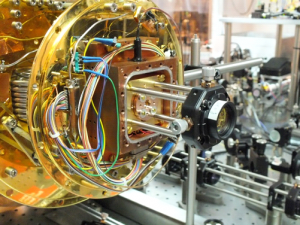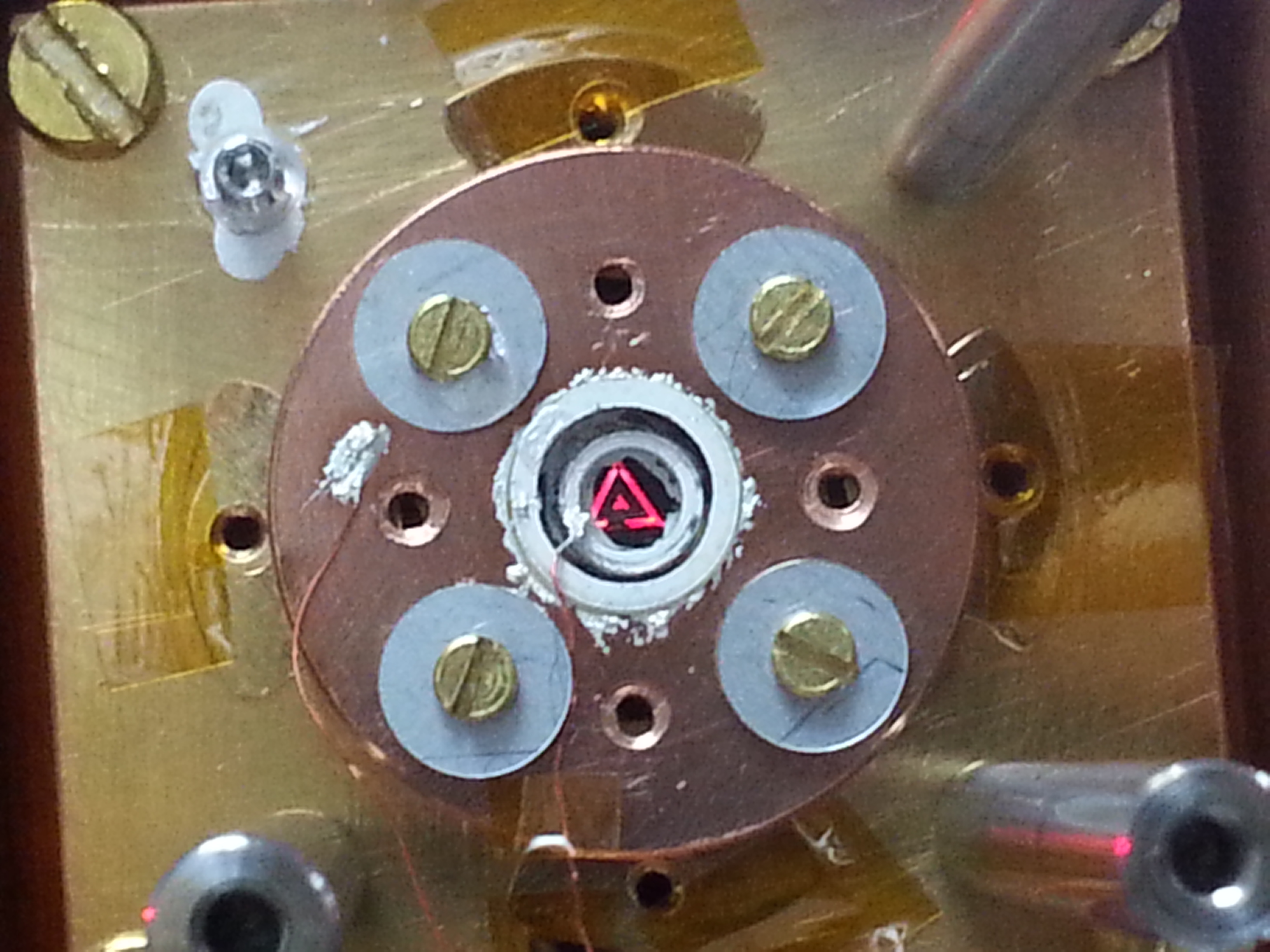Optomechanics and Quantum Measurments
SOME PUBLICATIONS
K. Makles, T. Antoni, A. G. Kuhn, S. Deléglise, T. Briant, P.-F. Cohadon, R. Braive, et al. “2D Photonic-Crystal Optomechanical Nanoresonator.”
Opt. Lett. 40 (2015)
X. Chen, C. Chardin, K. Makles, C. Caër, S. Chua, R. Braive, I. Robert-Philip, et al. 2016. “High-Reflectivity Si3N4 Photonic-Crystal Membranes for Optomechanics:”
Submitted (2016)
PEOPLE
Leonhard Neuhaus (PhD)
Remi Metzdorff (PhD)
Sheon Chua (postdoc)
Tristan Briant (staff scientist)
Antoine Heidmann (staff scientist)
Pierre-Francois Cohadon (staff scientist)
Quantum limits in high – precision measurements
Our group is interested in optomechanical coupling to (i) understand how quantum measurement limits are enforced, (ii) how they can be used for quantum information applications and (iii) how quantum limits can be beaten by applying squeezed states of light. For these purposes, we have built and are operating a number of table-top optomechanical experiments, which allow us to demonstrate the effects of quantum noise on displacement sensing with macroscopic mechanical resonators. These experiments are performed from room temperature down to dilution cryogenic temperatures (less than 1 K). The setups include quantum-limited laser sources, low-noise optical detection schemes, high-quality mechanical resonators, low-loss optical coatings, and vacuum/cryogenic environments.
Quantum optomechanics with a macroscopic quartz micropillar

 The micropillar experiment aims at the observation of quantum phenomena with the motion of a macroscopic mechanical oscillator. Today’s main obstacle to observe quantum effects in radio-frequency mechanical oscillators is thermal noise (Brownian motion), which usually leads to the rapid decoherence of pure quantum states. By emplying a crystalline material such as quartz for our oscillator, we can drastically lower its thermal noise in a low-temperature environment. By coupling such a cryogenic mechanical oscillator to an optical cavity, the mechanical oscillator’s thermal occupancy can be lowered further down to the level of a few quanta by laser-cooling. In this regime, quantum mechanical effects are the dominant source of noise that hinders a perfect measurement of the oscillator’s motion.
The micropillar experiment aims at the observation of quantum phenomena with the motion of a macroscopic mechanical oscillator. Today’s main obstacle to observe quantum effects in radio-frequency mechanical oscillators is thermal noise (Brownian motion), which usually leads to the rapid decoherence of pure quantum states. By emplying a crystalline material such as quartz for our oscillator, we can drastically lower its thermal noise in a low-temperature environment. By coupling such a cryogenic mechanical oscillator to an optical cavity, the mechanical oscillator’s thermal occupancy can be lowered further down to the level of a few quanta by laser-cooling. In this regime, quantum mechanical effects are the dominant source of noise that hinders a perfect measurement of the oscillator’s motion.
The literature contains a large number of theoretical proposals to improve the measurement sensitivity beyond these quantum limits, many of those aiming at improving the sensitivity of future gravitational wave detectors. Our table-top experiment will be able to perform proof-of-principle demonstrations of such techniques and to explore the phenomenology of quantum mechanics in the so-far unexplored regime of masses in the range of tens of micrograms.
High-finesse optical microcavities
High-finesse Fabry-Perot cavities are a standard tool for high-precision measurements. A high finesse leads to a high sensitivity as the finesse corresponds to the number of round-trips the light does inside the cavity. Many factors are expected to limit the finesse of optical cavities: absorption and transmission through the mirror coatings, diffraction on the mirror edges and scattering on their surface, etc. High-finesse Fabry-Perot microcavities are very sensitive to losses due to form error in the mirrors’ shape. In addition to scattering, this can lead to a resonant coupling between the fundamental mode of the cavity and higher-order transverse modes TEMmn for precise cavity lengths. As a consequence, the cavity losses rise dramatically in sharp length domains.
We are developing an experiment to study the round-trip losses depending on the length of a Fabry-Perot plano-concave microcavity and to investigate a way to reduce these losses adding extra clipping losses to higher-order modes. The cavity we use for this measurement reproduces the characteristics of the micropillar cavity (link toward Quantum optomechanics with a macroscopic quartz micropillar), using the same kind of concave mirror fabricated by photoablation with a CO2 pulsed laser.
